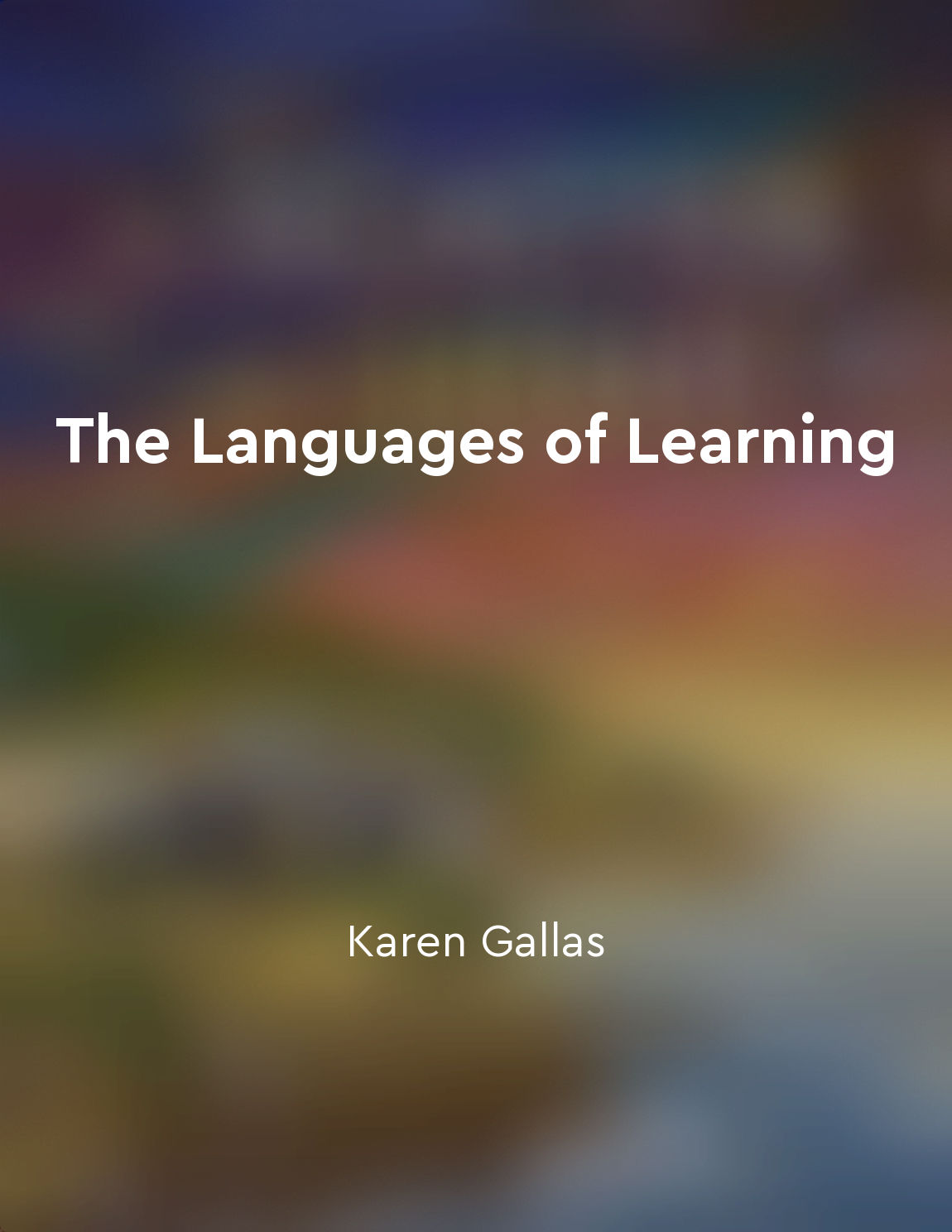Teachers must respect and validate children's languages of learning from "summary" of The Languages of Learning by Karen Gallas
When educators enter the classroom, they bring with them certain assumptions about learning and teaching. One of the most important assumptions that teachers must recognize is that children possess their own unique languages of learning. These languages are not limited to verbal communication, but encompass a wide range of expressions and behaviors that children use to make sense of the world around them. It is crucial for teachers to respect and validate these languages in order to create a supportive and inclusive learning environment for all students.
Respecting and validating children's languages of learning means acknowledging and honoring the diverse ways in which children engage with the curriculum. This may involve recognizing the different ways in which children express their ideas, thoughts, and feelings, whether through verbal communication, artistic expression, physical movement, or other forms of engagement. By valuing these diverse languages, teachers can create a more inclusive and equitable classroom where all students feel seen, heard, and valued.
Furthermore, respecting and validating children's languages of learning involves understanding that each child brings their own unique background, experiences, and cultural influences to the learning process. By recognizing and honoring these differences, teachers can create a more culturally responsive and relevant curriculum that reflects the diverse identities and perspectives of all students. This not only enhances students' sense of belonging and connection to the curriculum, but also fosters a greater sense of respect and understanding among classmates.
In order to effectively respect and validate children's languages of learning, teachers must be willing to listen, observe, and engage with students in a meaningful and authentic way. This may involve incorporating students' interests, experiences, and cultural backgrounds into the curriculum, as well as providing opportunities for students to share their thoughts and ideas in a variety of ways. By actively listening to and valuing students' voices, teachers can create a more student-centered and empowering learning environment that promotes collaboration, critical thinking, and creativity.By respecting and validating children's languages of learning, teachers can create a more inclusive, equitable, and engaging classroom where all students have the opportunity to thrive and succeed. This approach not only benefits students academically, but also promotes a greater sense of belonging, connection, and respect among classmates. Teachers play a crucial role in creating a supportive and inclusive learning environment where all students feel valued, respected, and empowered to learn and grow.

Open in app
The road to your goals is in your pocket! Download the Oter App to continue reading your Microbooks from anywhere, anytime.


